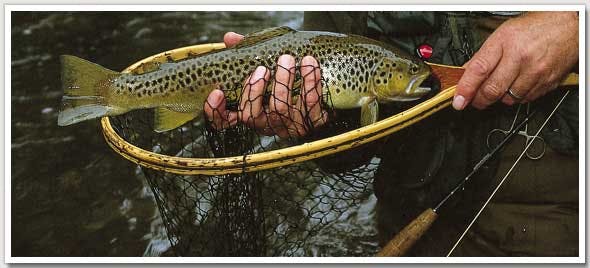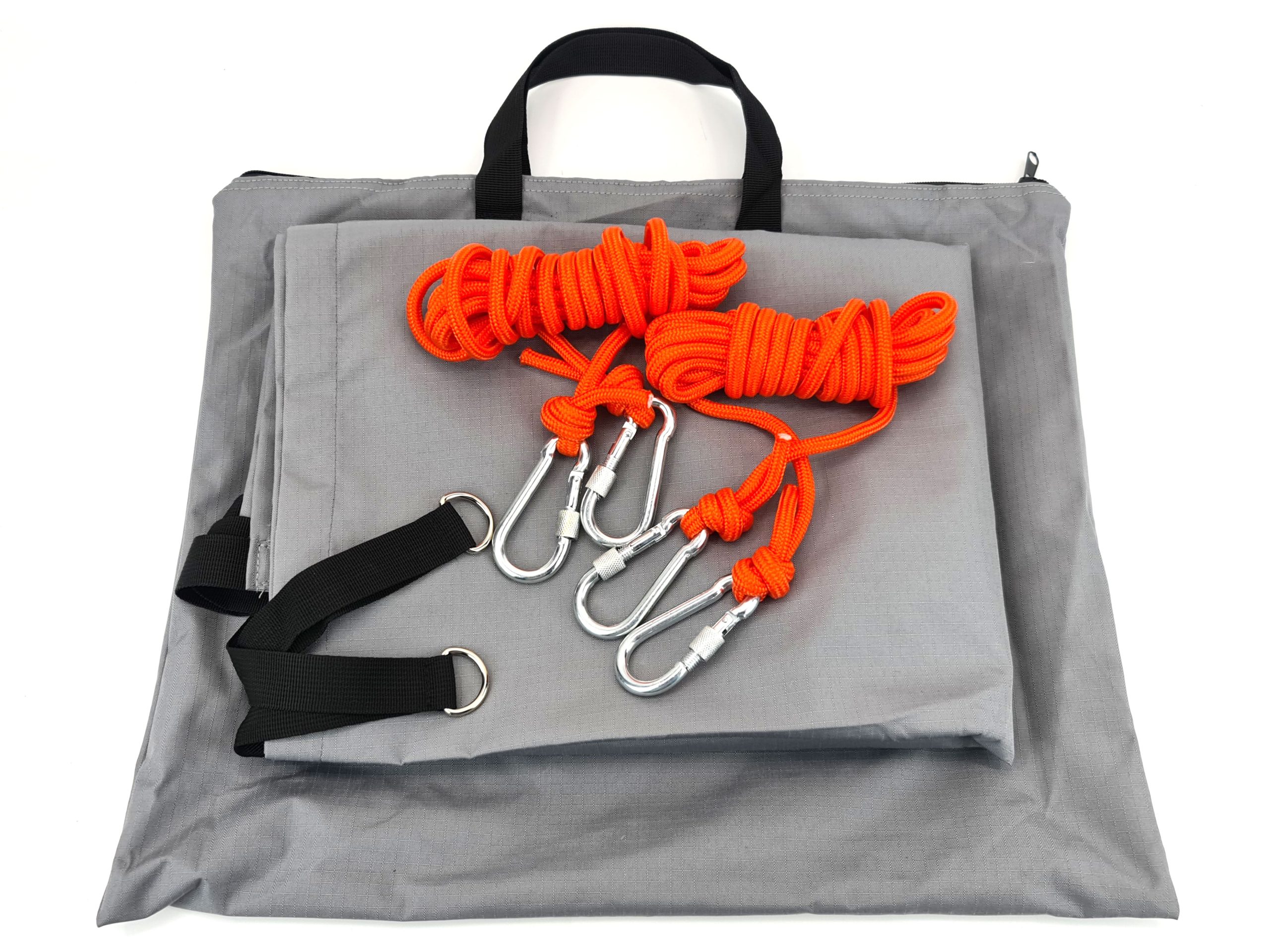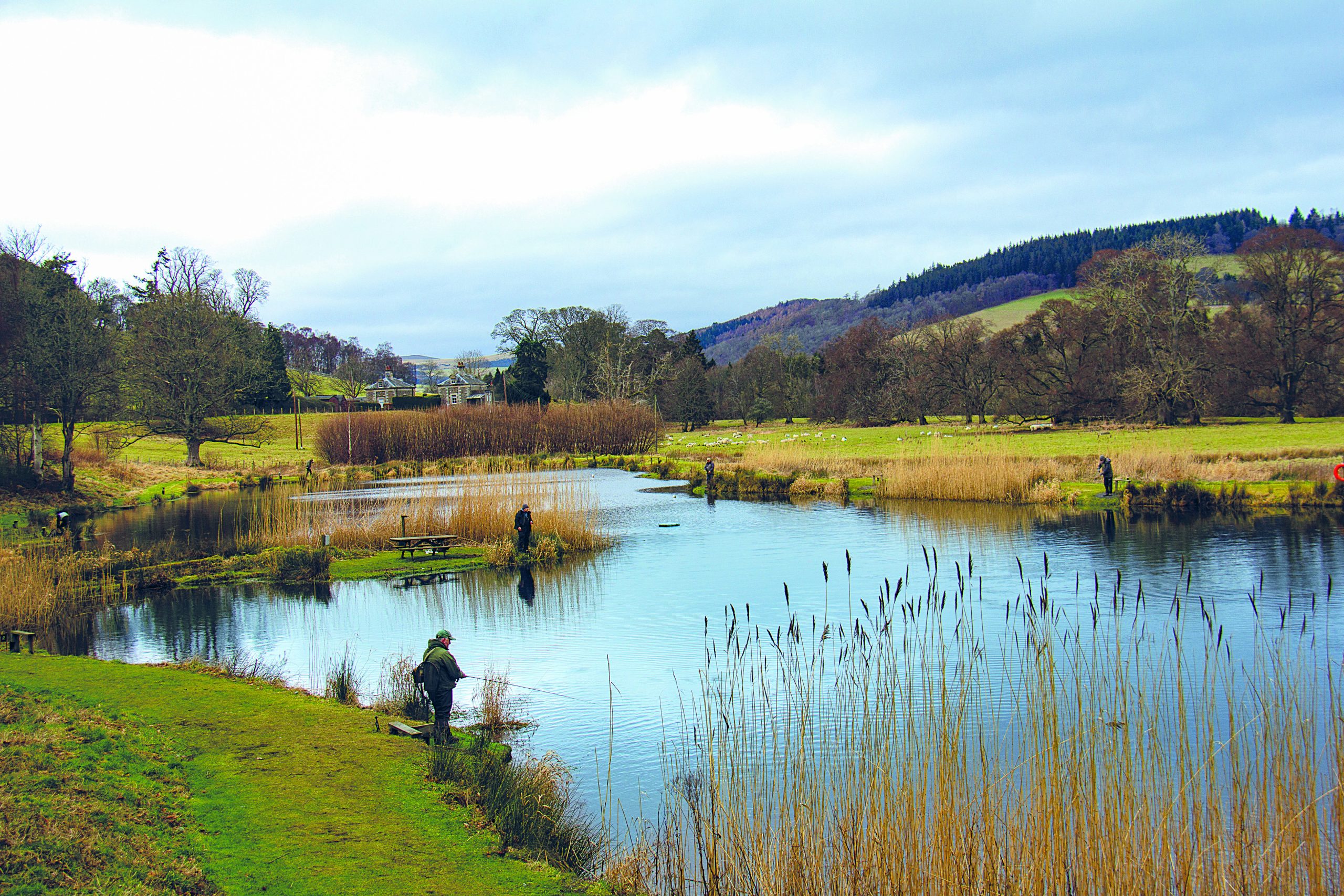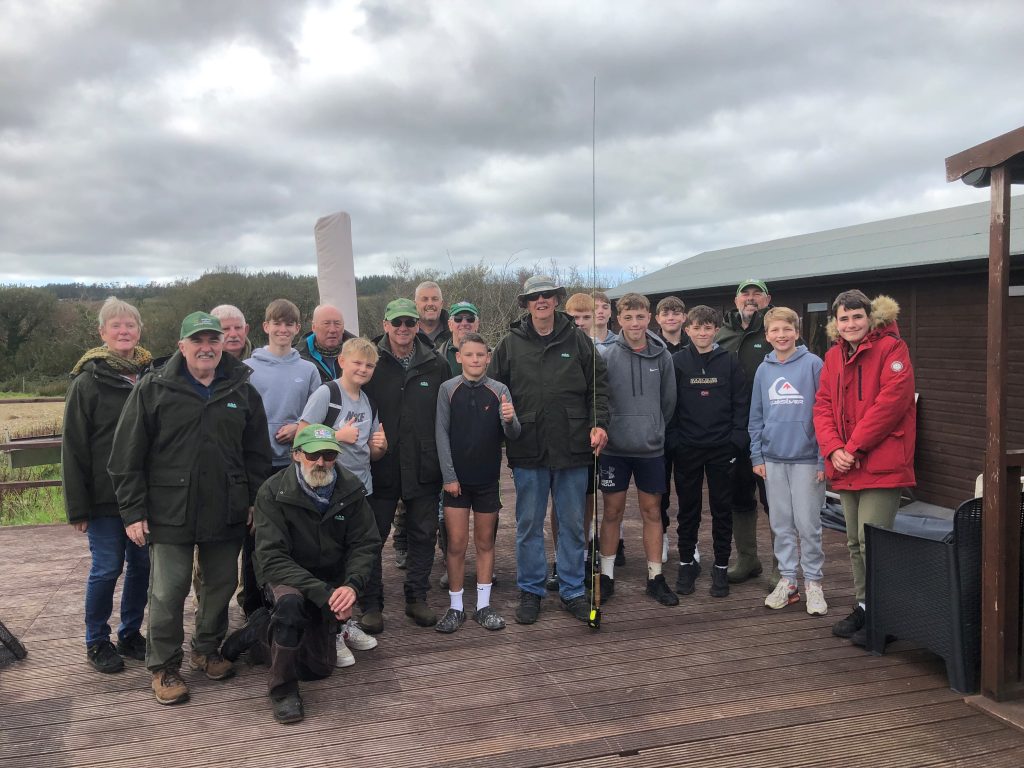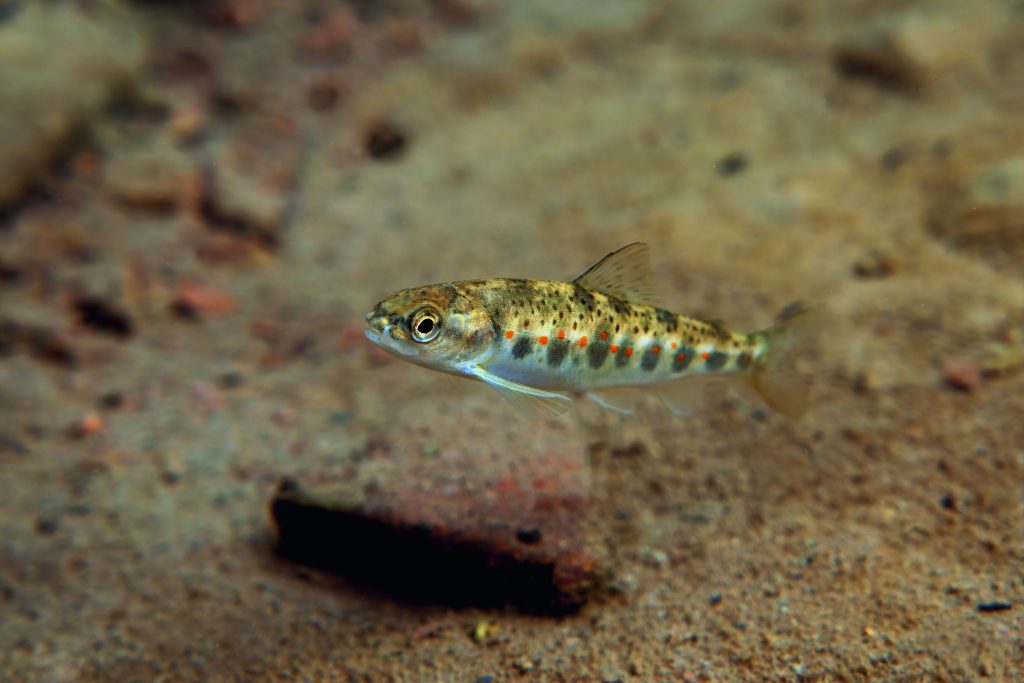BEGINNER’S GUIDE TO APPROACHING RIVER FISHING – PART ONE
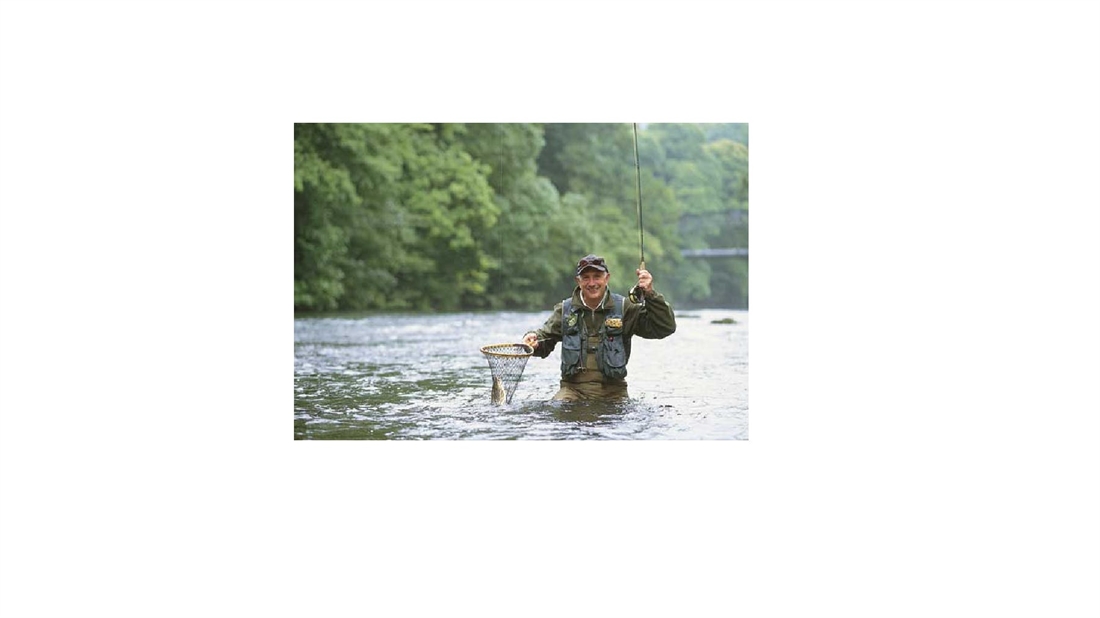
More and more people are rediscovering the joys of fly fishing on the rivers as an alternative to stillwater trouting.
It’s more demanding, you’re unlikely to ‘sack up’ and double figure fish are virtually unheard of, but the numbers of anglers returning to the rivers are on the up. In the first of two articles, Bob Carnill talks newcomers through the basics of fishing in moving water, this month, focusing on dry fly skills
ON today’s typical reservoir fishery, the ‘hard-working’ angler is capable of catching a lot of fish through sheer effort. By ‘hard-working’, I mean the angler who is prepared to fish hard for hours on end and really cover the water in search of fish. Things are different on the rivers, where time spent NOT fishing can actually have more of a bearing on your catch rate. Observing flows, currents, flylife and rising fish and doing everything you can to ensure the fly is properly presented usually results in far more offers and hook-ups than thrashing every pool encountered to a foam.
You see, life for a trout living in a river is a solitary affair – totally governed by the current. The reservoir trout, on the other hand, tends to be more gregarious and feeds ‘on the hoof’, usually in the company of other trout in an area of plenty.
It is directly due to the fact that his life is dictated by the current that there is a strict ‘pecking order’ in place on all of our trout streams – from the wee moorland beck to the large lowland river. Without exception, the bigger and more aggressive the fish, the better the lie he will inhabit and defend against all comers. Catch him and you can guarantee a fish of similar size and attitude will be in his lie tomorrow. The thinking angler can exploit this to his advantage provided he reads the pool before barging in and ‘lining’ it willy nilly.
Having established that the biggest and best fish get the best lies and that this principal applies all the way down the ranks of a river’s trout population, all we need to do is learn how to recognise what constitutes a lie, which is easier said than done!
If the trout are rising, it’s easy, but for much of the time, their food will be ‘served’ sub-surface in the form of nymphs and various larvae, not to mention drowned terrestrial flies, insects and caterpillars.
On moderate to large rivers we learn either by association – by catching regularly at a particular place in a run, glide or riffle – and/or by reading the nature of the river at a particular point and fishing it accordingly. This is not half as difficult as it might sound if you bear in mind what I said earlier about the best fish getting the best lies.
To illustrate the point, let me take you to a small stream I visited on Dartmoor several years ago. I came upon a delightful trout pool in miniature. At its ‘head’ the pool was fed by a steady trickle from the pool above, generating a nice steady ‘push’ down its centre. In this, the deepest part, lay the ‘Master’ of the pool – all five inches of him! Behind him lay about five or six other wee trout that stepped down in size and ‘rank’ the further away they got from the head of the pool. Here was a classic example of ‘Mr Big’ dining first and rest living on the scraps from his table.
Each fish knew his place – at least they did until I inadvertently spooked ‘Little Titch’ at the tail end who then shot up the pool, causing a chain reaction as he went. Feeling threatened by this revolt in the ranks, Mr Big shot down the pool, nipped Titch’s tail and then returned to the head of the pool, whereupon the rest of the residents, one by one, fell back into line behind him.
If we were to apply this same scenario to a large river with bigger trout and a much heavier current – say something on the scale of the Derbyshire Derwent – then I can assure you that a very similar pecking order will prevail.
Learning to read pools can be daunting for the beginner, but like most things in life, it isn’t half as difficult as it first appears. The individual currents, characteristics and signatures encountered in one pool, run or riffle will be repeated time and time again in subsequent pools and the lessons learned in one can be put to good use in another.
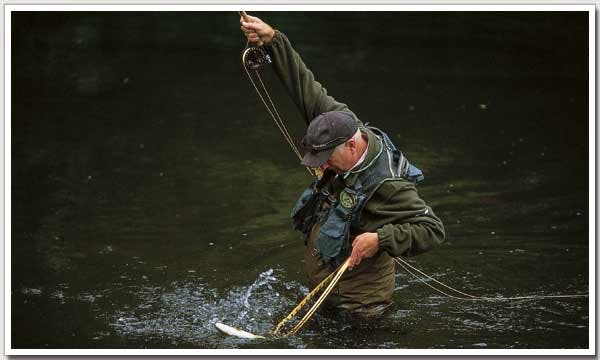
Tackle
Your choice of fishing tackle is a highly personal one, but when it comes to selecting an outfit for river fishing, you don’t have to be too specific. A nine foot 5-weight should be adequate for the majority of situations, but for smaller streams or really delicate presentation, an eight foot 4-weight rod will give you the edge.
Many river purists insist on using a double taper fly line for superior presentation of the fly, but I have used weight forward lines on the rivers for the last 30 years and don’t think a double taper line would have caught me any more fish.
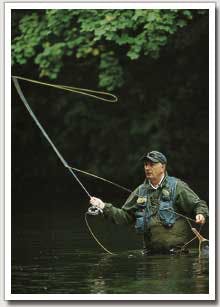
Keep your fly line short to maintain control
As for dry fly leaders, I tend to keep things as simple as possible and will fish a ‘straight-through’ leader of uniform breaking strain mono whenever conditions will allow. Because most dry fly fishing is conducted by casting across or directly upstream, in anything other than a downstream wind, this is usually adequate. However, faced with the dreaded downstream blow, a tapered leader will make a big difference to turnover and presentation.
There are some really good knotless tapered leaders on the market and the plus side of these is that they transmit the rod’s power flow smoothly from flyline to leader and right down to the fly.
Always remember to degrease the forward section of any dry fly leader so it penetrates the surface film on contact – failure to do so is liable to spook the target fish in all but broken or choppy water.
The other alternative is to tie up your own tapered leaders using three different breaking strains of your favourite leader material. Such a leader should ‘step down’ from butt to tip, in increments of approximately 2lb, with each section being of a similar length.
Assuming that you need a 9ft dry fly leader with a reasonably fine point of say 3lb; using the ever-reliable four-turn water knot, tie the 3ft point section of 3lb line to a 3ft length of 5lb line and to that, tie a 3ft section of 7 lb line.
This is the tapered leader in its simplest form – the scope for variations in overall length and the constituent parts involved are endless and half the fun is experimenting to find out which combination delivers the best presentation of the fly in a given set of circumstances.
Almost as infinite is the choice of artificial dry flies available to the angler, so I’d recommend to do what I do and minimise the risk of utter confusion by keeping it as simple as possible.
On the Derbyshire Derwent the trout aren’t daft, but they aren’t all that fussy either. Spooning fish usually reveals a cocktail of aquatic and terrestrial life which falls from the deciduous trees lining the banks and is eagerly snapped up by the trout. Regular finds include soldier and sailor beetles, black beetles, various caterpillars, spiders, flat-winged flies, bees, wasps and lots of other unidentified terrestrial food-forms. Add to this the aquatic input of up-winged duns and spinners, various sedges, chironomids and what have you got? One heck of a lot of artistic licence when it comes to what fly you are going to put on the business end of your leader.
Given the choice between choosing the perfect pattern or achieving perfect presentation, I would choose the latter every time. So, for the Derwent, I restrict myself to the following in a variety of hook sizes:
Black Gnat, Knotted Midge, Grey Duster, Greenwell’s Glory, Caperer, Bob’s Black Beetle, F-fly, Soldier Palmer and various Mayflies (below, from left to right.)

Clothing and accessories
Nobody can enjoy a day’s fishing if he or she is cold and wet and as far as river fishing is concerned, it isn’t just rain, sleet and snow that is liable to wet you. If you are going to do the ‘river thing’ properly – particularly on some of our bigger rivers, then you have got getting in deep – quite a bit deeper than thigh waders will permit. Chest waders, then are a must and I actually have two pairs – some thick neoprenes for early season and lighter weight breathables for the warmer months.
Deep wading in swift currents can, of course, be dangerous so make sure you have the right soles for the job in hand – preferably with studs, which I glue in for extra durability. A wading stick is also a good idea for feeling your way around the riverbed and extra support while wading.
Reading the river
Because the trout looks to the current to supply his food, we, as anglers should be studying the flow of every pool, riffle and glide to pinpoint ‘fishy’ lies. It’s logical to assume that the majority of the food suspended in or on the water will be where the bulk of the flow is, but from the trout’s point of view, the equation is slightly more complex. If he has to work too hard to maintain his ‘station’ beneath the conveyor belt of tasty snacks, the energy expended in getting the food starts to cancel out the calories consumed, so he’s actually looking to strike a balance.
Trout actually use the currents very cleverly to maintain this happy medium and I’ve often caught fish in the most unlikely-looking of lies. Two areas in particular are worthy of special attention on the river – in front of stones and the ‘seam’ where two different currents ‘rub shoulders’. In front of most stones, there is a ‘stopper’ wave where, like dolphins surfing the bow wave of a ship, it’s easy for the trout to sit without too much effort. Similarly, a trout rising regularly in a fast run will most likely be hovering between this and the slacker water just to the side of the run.
I neglected what have since become some of my favourite runs on the Derwent for years because I considered the flows too ‘boisterous’ to accommodate trout and it was only by accident that I learned of their potential. It’s also worth remembering that the faster the flow, the harder it is for the fish to see your leader and the less time the trout has to scrutinise your fly and decide whether to take or reject it. Early season, or in a sparse hatch, this can often work to the angler’s advantage as given the choice to ‘use it or lose it’ fish will often opt for the former!
Presenting dry flies to arising fish
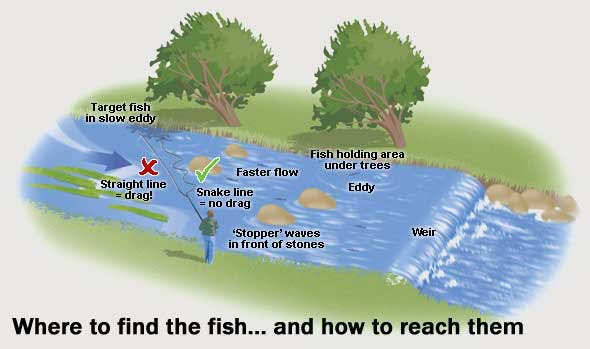
The main difference between still water and running water is that in stillwaters, the trout is always on the move. He seeks out his food on the hoof, takes it on the hoof and swallows it on the hoof. If you haven’t covered him during that time, he’s on his way.
The river trout is fed by the current and sits in his lie waiting for the flow to literally put food into his mouth. As far as the angler is concerned, this is no bad thing, because he isn’t going to go anywhere!
This means the angler has time to assess the situation at his leisure and plan his approach by observing the currents between him and his quarry. It’s not just the flow in which the trout is on the fin that’s important, but what’s happening in between that can make the difference between flawed and perfect presentation. More often than not, the target trout will have taken up station in a flow of water that is slower than the water between you and it. Given that casting from directly downstream of a fish is often not an option, the angler usually needs to cast upstream and across at an oblique angle, which means the flyline will be lying across water moving at different speeds.
Put out a straight line and the speed of the current between you and the trout means you will get drag almost as soon as the fly lands on the water, so the trick is to throw in a bit of slack by casting a ‘snaky’ line. You can do this either by wiggling the rod from side to side as you shoot the line at the fish, or sharply checking the forward cast just as the leader turns over in mid air, pulling back the fly line and making the leader land on the water with some slack built in.
This is where time spent ‘doing your homework’ will really pay off. Read the currents correctly and you increase your chances of getting it right first time and hooking the target fish.
The beauty of dry fly fishing is that everything about it is so highly visible. The target fish gives itself away because it has to break the surface of the water to take the naturals, but the way he takes a fly can vary quite dramatically. It may be a delicate sipping rise form, a classic head and tail rise or, during Mayfly time, an aggressive slashing rise.
But no matter what the rise form might be, they should all be reacted to in a very similar manner: in a word, casually. The simplest mistake anyone can make when fishing the dry fly is to strike the instant the fly is taken, because this will almost always end in failure to connect. The way to avoid this is to steel yourself in advance and try to wait that fraction of a second before you lift the rod to set the hook.
Catch and release
So you’ve hooked your first river trout and played him to the net. What are you going to do with him? I can’t remember the last time I killed a trout or a grayling on our stretch of the Derwent. Not that I have anything against anyone taking a few fish home from wherever they happen to fish, but, fishing the stillwaters as I do, I have as many trout as I can cope with without plundering our precious river stocks of native brownies. Consequently, I always return my fish.
Every angler should always deal with any fish caught with care and consideration whether it is to be killed or released. Always de-barb your hooks BEFORE fishing and try to unhook fish without actually removing them from the water. This is easy if you are wading and, as a consequence, I very rarely carry a landing net with me on the river.
As long as you have debarbed the hook, you can usually bring a fish alongside you, slide your hand down the leader, grab the hook and simply pull it free. If the fly is further inside the mouth, bring the fish to hand (which should remain in the water) and gently support it while you remove the hook with a forefinger or forceps.
